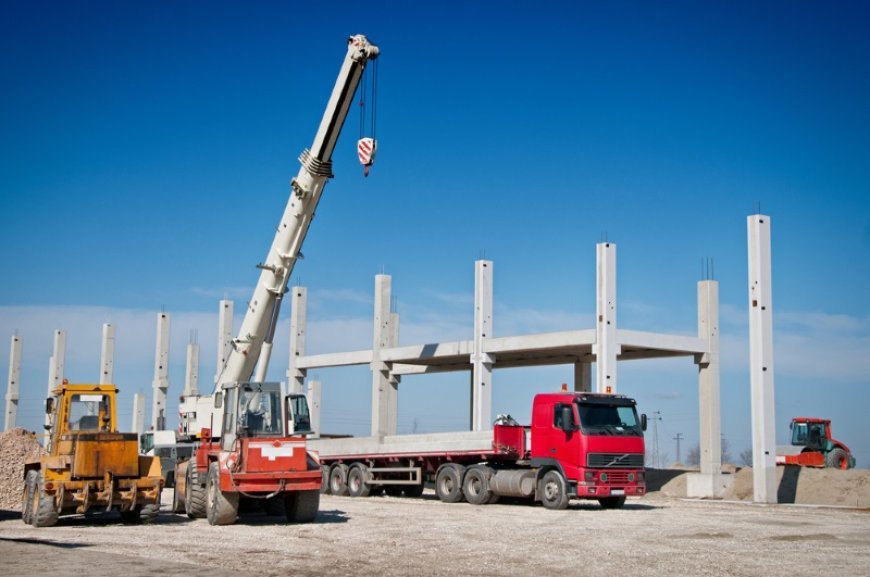Advanced Techniques for Using Mobile Cranes

Have you ever wondered how mobile cranes hoist massive loads without breaking a sweat? Do you find yourself curious about the advanced methods that seasoned operators use to complete complex lifts? Perhaps you’re in the construction industry, or simply inquisitive about the intricate world of crane operations. Whatever your motivation, you’re in the right place.
Types of Mobile Cranes and Their Key Components
Mobile cranes come in various designs, such as all-terrain cranes, rough-terrain cranes, hydraulic truck cranes, and crawler cranes. Each has its own set of strengths, but they share some core components: a telescopic or lattice boom, a rotating superstructure (or slewing unit), and a carrier that enables movement. While some cranes are better suited to rough, uneven ground, others excel on paved roads or in confined urban settings.
Understanding Capacity, Reach, and Constraints
Capacity and reach are the bread and butter of crane operations. Many factors play a role, from the crane’s structural design and boom length to the nature of the load. Operators also must account for ground stability, wind conditions, and any overhead obstacles, like power lines.
Bear in mind that as the boom extends, the crane’s lifting capacity decreases. That’s why skilled lift planning is critical. One small oversight can lead to an overloading scenario, risking damage or injury. By carefully reviewing load charts and abiding by safety regulations, you’ll dodge costly mistakes and keep operations running smoothly.
Preventing Crane Overloading and Structural Failures
Preventing overloading is vital. A crane that carries more than its rated capacity can suffer damage to its gears, booms, and hydraulic systems. Worse yet, a toppling crane puts workers in danger.
Operators must cross-check load weight, lifting radius, and potential dynamic forces (like sudden movements or swings). Many modern cranes are equipped with load moment indicators, which alert you if you’re nearing capacity. For an extra layer of security, some operators even use advanced software to simulate lifts before putting them into action. It’s a brilliant way to minimize guesswork and identify potential weak points in the plan.
Advanced Crane Operations: Precision and Technique
Beyond foundational skills, advanced crane operations demand a methodical approach. Here, we’ll look into rigging methods, complex lift planning, and frequent mistakes that even seasoned operators can make.
Complex Lift Planning and Software Tools
Complex lifts often require more than just a quick glance at a load chart. Many operators now use computer-based tools to simulate lifts in 3D. This virtual preview offers real-time feedback on the crane’s center of gravity, possible collisions with surrounding structures, and the impact of weather conditions.
These planning tools are invaluable for large-scale projects, where multiple cranes might operate simultaneously or where high wind speeds pose a threat. Think of it as a dress rehearsal: by simulating every move beforehand, you reduce the chance of human error and keep downtime to a minimum.
Streamlining On-Site Communication
Whether it’s hand signals or two-way radios, communication should be clear and direct. Miscommunication can lead to a raft of issues, from minor delays to major accidents. Establish a simple, universal set of signals or code phrases that everyone on the team understands.
When multiple cranes work in tandem, designate a lead supervisor to coordinate every move. This not only reduces confusion but also helps respond quickly if a situation changes—like an unexpected power line in the crane’s radius or sudden alterations in the site layout.
Reducing Downtime With Preventive Maintenance
A crane that’s constantly out of action needs more than emergency repairs; it needs a robust preventive maintenance program. Checks on hydraulic fluid, wire rope integrity, and crane computer systems can detect small issues before they balloon into major breakdowns.
Regular maintenance schedules also help operators predict crane availability, which is vital for complex project planning. By reducing unplanned downtime, you reinforce your capability to handle jobs swiftly and safely—an important point for building trust with clients.
Showcasing Expertise Through Online Platforms
Additionally, highlight the variety of projects you’ve tackled. From motorway bridge installations to harbor expansions, each project showcases a unique skill set. That way, prospective clients can see just how qualified you are.
Coordinating Large-Scale Lifts and Logistics
Large-scale lifts often involve not just one but several mobile cranes working together. Communication is paramount here—every operator must know how their lift fits into the overall sequence of events. 3D simulations and digital project management tools can unify these moving parts.
In Australia, it’s common to see major infrastructure projects that span months or even years. Early planning and a methodical approach prevent chaos when deadlines loom. With ample forethought, you’ll reduce last-minute scrambles and deliver projects on schedule.
Conclusion: Ongoing Success with Advanced Mobile Crane Techniques
Taking on a challenging lift demands not just raw power, but also careful coordination, attention to detail, and in-depth knowledge of Australian regulations. By now, you’ve uncovered how mobile cranes differ from tower cranes and why licensing requirements keep our work sites across Australia well-managed. You’ve seen how software tools can visualize complex lifts before they happen, cutting out guesswork. Plus, you’ve discovered quick hits to propel efficiency, from streamlined communication to preventive maintenance.
What's Your Reaction?























































